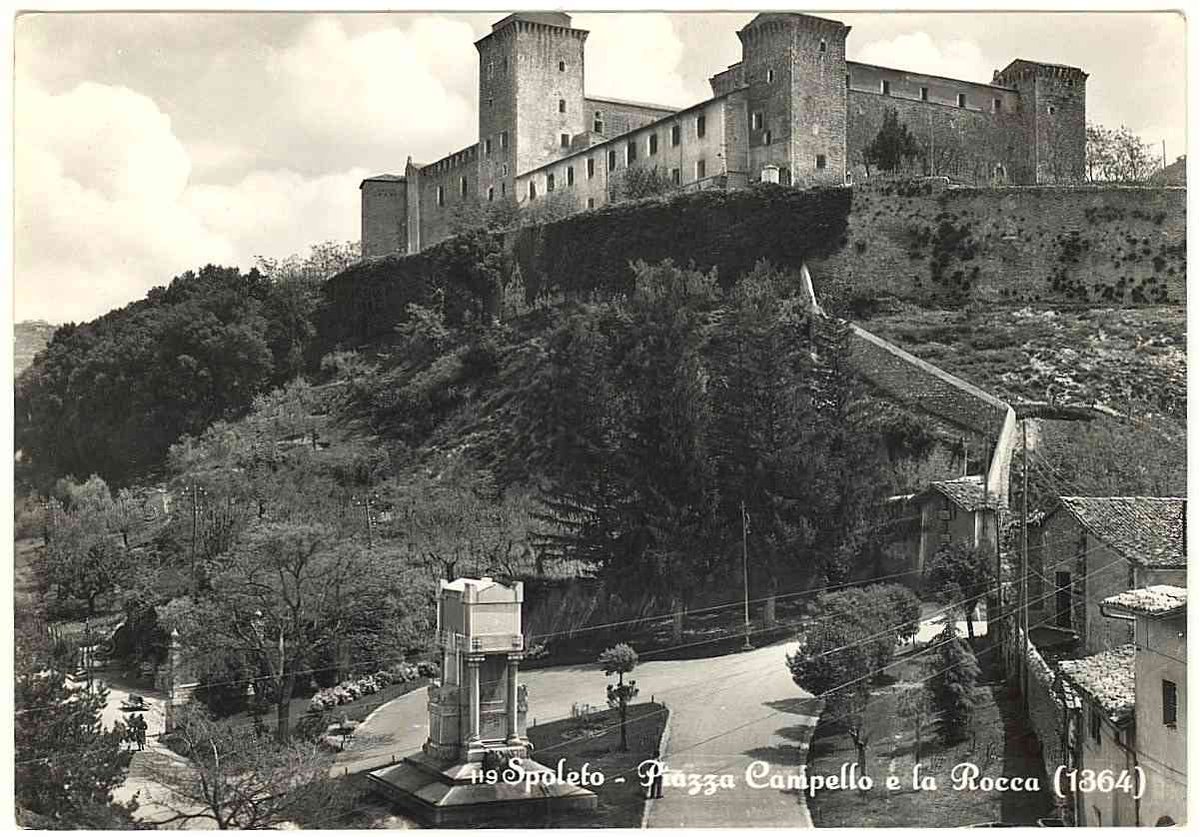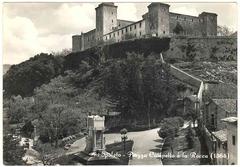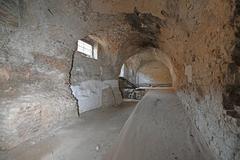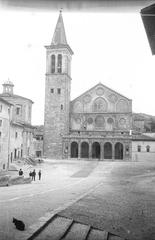
Monumento Ai Caduti Del 1860 Di Spoleto: Visiting Hours, Tickets, and Complete Guide
Date: 14/06/2025
Introduction
The Monumento Ai Caduti Del 1860 Di Spoleto stands in the heart of Spoleto, Umbria, as a solemn tribute to those who gave their lives during the Risorgimento—particularly the pivotal events of 1860 that led to Italian unification. This monument is not only a historical marker but also a living symbol of local and national identity, reflecting the city’s role in shaping Italy’s modern history.
This comprehensive guide provides you with everything you need to know: from the monument’s historical significance and architectural features to practical information on visiting hours, accessibility, travel tips, and nearby attractions. Whether you’re a history enthusiast, a traveler, or a local resident, this resource will help you make the most of your visit to one of Spoleto’s most meaningful landmarks.
Historical Origins and Cultural Significance
The Monumento Ai Caduti Del 1860 commemorates the citizens and soldiers of Spoleto who fought and fell during the dramatic events of 1860—an era defined by the Risorgimento, Italy’s unification movement. In September 1860, Spoleto was the site of a critical battle between troops of the Papal States and the Kingdom of Sardinia. The fall of Spoleto marked the city’s integration into the new Kingdom of Italy and symbolized the end of Papal control (Britannica; Spoleto Info). The monument, erected in the early 20th century, stands as a testament to the courage and sacrifices of those who contributed to the nation’s unity.
Today, the monument is a focal point for civic rituals, educational activities, and public memory. It resonates deeply within the community, serving as a site for annual commemorations, such as Republic Day and anniversaries of the 1860 battle, reinforcing its ongoing cultural and civic significance (Umbriatourism).
Location and Setting
The monument is prominently situated in Piazza Campello, a central and historically significant square overlooking the city’s ancient walls and the Umbrian valley. This strategic placement—at the intersection of Spoleto’s civic, religious, and cultural life—ensures the monument’s visibility and accessibility. The square itself is a vibrant hub, surrounded by key landmarks like the Rocca Albornoziana fortress and the Spoleto Cathedral, making it an ideal starting point for exploring the city’s heritage (myspoleto.it).
Monument Design and Symbolism
Architectural Features
- Material and Form: The monument is constructed from local travertine or limestone, echoing the architectural heritage of Spoleto. Its robust, minimalist design features a tall, monolithic stele on a broad, slightly tapered base, symbolizing endurance and solemnity (myspoleto.it).
- Inscriptions: Engraved on the front face is a dedicatory inscription in capital letters, honoring those who perished in Spoleto’s 1860 liberation. The simplicity of the design draws attention to the act of remembrance.
- Stylistic Influences: The monument reflects neoclassical and early modernist trends, with geometric clarity and restrained ornamentation. This aesthetic emphasizes dignity and collective memory over individual heroics.
- Surroundings: The memorial sits in a paved area, bordered by low stone curbs or planters, creating a respectful space for reflection and public ceremonies.
Symbolic Elements
The upright stele recalls ancient funerary markers and obelisks, reinforcing the themes of endurance and remembrance so central to Italian civic culture. The use of local stone further strengthens the monument’s connection to Spoleto’s past and present. Its placement and orientation ensure that remembrance is woven into the city’s daily life.
Visiting Hours, Tickets, and Accessibility
- Hours: The monument is outdoors and accessible year-round, 24 hours a day. There are no formal visiting hours, but daylight visits are recommended for safety and appreciation of the views.
- Admission: No tickets or fees are required; the site is freely accessible to all.
- Accessibility: Piazza Campello is generally level and suitable for wheelchair users and those with limited mobility, though some surrounding streets are cobbled or inclined.
- Guided Tours: Local tour operators and the Spoleto tourist office offer guided tours that include the monument and other historical sites (myspoleto.it).
Travel Tips and Logistics
- Getting There: Spoleto is easily reached by direct train from Rome (1.5 hours) or Perugia (45 minutes). For drivers, the closest highway exit is Foligno on the E45, followed by a short drive south (Strictly Italy). Parking is available in paid lots on the city’s outskirts.
- Best Times to Visit: Spring (April–June) and fall (September–October) offer ideal weather and fewer crowds. Early morning and late afternoon provide the best light for photography.
- Nearby Amenities: Public restrooms, cafés, and restaurants are available around the square. Accommodations range from boutique hotels to guesthouses in the historic center (Strictly Italy, Walk to World).
- Dress Code and Behavior: Dress respectfully and maintain quiet, especially during ceremonies.
Civic Role and Commemorative Functions
The monument serves as a central site for annual civic events—most notably on September 17 (the anniversary of Spoleto’s 1860 liberation), Republic Day (June 2), and other national holidays. These ceremonies, often involving local authorities, military representatives, and civic organizations, reinforce the monument’s role as a living symbol of shared memory and identity (Spoleto7giorni).
Artistic Symbolism and Educational Impact
Artistically, the monument’s simplicity directs focus to remembrance and collective sacrifice. Educational initiatives, including guided tours and school visits, use the monument as a platform for discussing the Risorgimento, civic values, and the ongoing pursuit of peace and unity. Involving veterans, historians, and the community at large, these efforts ensure the intergenerational transmission of memory and civic responsibility.
Community Engagement and Preservation
The monument is deeply embedded in Spoleto’s community life. It is maintained through local and national support, with periodic debates on preserving its visibility and accessibility amid urban and environmental changes (Spoleto7giorni). The surrounding area is cared for to maintain the dignity and prominence of this significant landmark.
Nearby Attractions and Suggested Itineraries
Combine your visit to the monument with other major Spoleto sites:
- Rocca Albornoziana: Medieval fortress with panoramic views and exhibitions.
- Spoleto Cathedral (Duomo): Romanesque masterpiece with renowned frescoes.
- Roman Theater and Archaeological Museum: Insights into Spoleto’s ancient past.
- Piazza della Libertà: Lively square offering shopping and dining.
Consider purchasing the Spoleto Card for multi-site museum discounts (Strictly Italy).
Practical FAQs
Q: Do I need a ticket to visit the monument?
A: No, it is open and free to access at any time.
Q: What are the monument’s opening hours?
A: As an outdoor public monument, it is accessible 24/7, though best visited during daylight.
Q: Is the monument wheelchair accessible?
A: Yes, the piazza is generally level and suitable for visitors with mobility challenges.
Q: Are guided tours available?
A: Yes, tours can be arranged through local operators and the tourist office.
Q: What other sites are nearby?
A: The Rocca Albornoziana, Spoleto Cathedral, and Roman Theater are all within walking distance.
Visuals and Media
Visitors are encouraged to photograph the monument, especially in the soft light of early morning or late afternoon. For digital media, use descriptive alt text such as “Monumento Ai Caduti Del 1860 Di Spoleto visiting hours” to improve accessibility. High-quality images and interactive maps are available through official tourism websites and Spoleto7giorni.
Responsible Tourism
Help preserve the monument’s dignity by refraining from climbing on the structure, avoiding littering, and respecting ceremonies. Participate respectfully in commemorative events and use translation apps to enhance your understanding if needed.
Additional Resources
For the most up-to-date information, visit the Spoleto tourist office or consult reliable sources:
Final Recommendations
The Monumento Ai Caduti Del 1860 Di Spoleto is more than just a historical marker—it is a profound emblem of unity, remembrance, and civic engagement. Its central location, dignified neoclassical design, and ongoing role in community life make it a must-see for anyone interested in Italy’s past and present. Plan your visit during spring or fall for the best experience, and consider joining a guided tour or attending a commemorative ceremony to deepen your appreciation.
For timely updates, travel tips, and more on Spoleto’s heritage, download the Audiala app, explore our related articles, and follow us on social media.
References
- https://myspoleto.it/pagina/monumento-ai-caduti-del-1860/
- https://www.spoleto7giorni.it/2014/12/13/abbattere-alberi-ai-cappuccini-per-far-splendere-il-monumento-ai-caduti/
- https://www.spoleto7giorni.it/2022/11/08/spoleto-cerimonia-al-monumento-ai-caduti-di-nassirya/
- https://strictlyitaly.com/things-to-do-in-spoleto-italy/
- https://www.umbriatourism.it/spoleto
- https://www.britannica.com/place/Spoleto
- https://walktoworld.it/blog/cosa-vedere-a-spoleto-in-un-giorno-itinerario-a-piedi/


